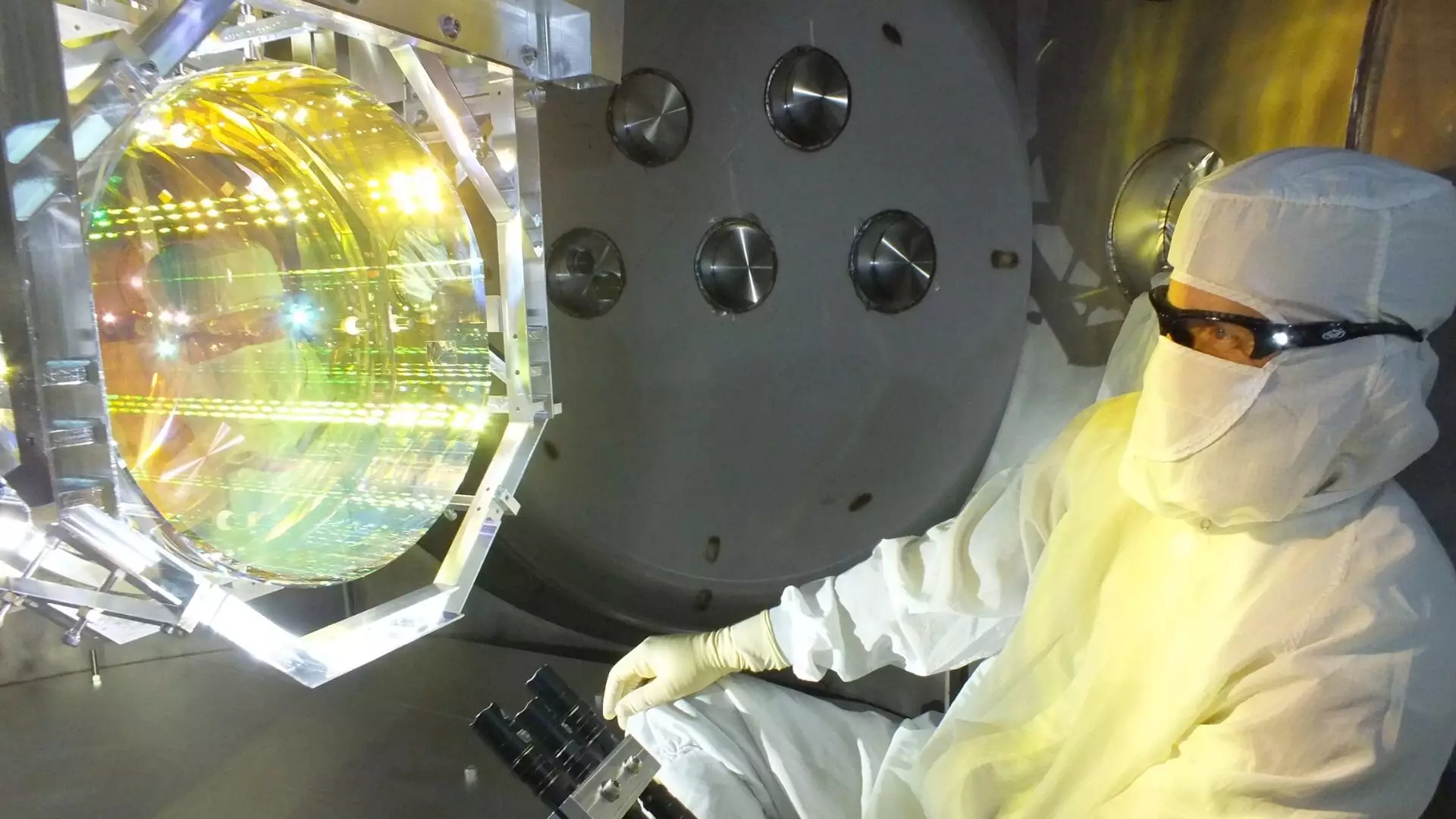Dark matter constitutes approximately 30% of the universe, yet it remains one of the cosmos’s greatest mysteries. Unlike ordinary matter, which emits or absorbs light, dark matter is inherently invisible, detectable only through its gravitational influences. Its presence is inferred from the movements of galaxies and galaxy clusters, leading to significant intrigue and extensive research among physicists. Despite advancements in technology and theoretical frameworks, a concrete understanding of dark matter remains elusive, with various candidates proposed, one of which is scalar field dark matter.
Recently, a groundbreaking study appearing in the journal Physical Review Letters (PRL) initiated a dialogue around the capability of gravitational wave detectors, like LIGO, in the pursuit of scalar field dark matter. This research, spearheaded by Dr. Alexandre Sébastien Göttel from Cardiff University, brings fresh insights into how these detectors can be leveraged beyond their conventional applications. Dr. Göttel’s transition from particle physics to gravitational wave data analysis marks a significant interdisciplinary approach, aligning detection techniques with the mysterious characteristics of dark matter.
Dr. Göttel emphasized the synergy between gravitational wave analysis and dark matter investigation, stating, “The opportunity to search for dark matter with LIGO seemed like the ideal way to apply my expertise in both areas while learning more about interferometry.” LIGO’s advanced sensitivity allows it to detect minuscule variations in spacetime, making it a formidable tool in the realm of cosmological exploration.
The Laser Interferometer Gravitational-Wave Observatory (LIGO) is a marvel of modern physics, utilizing laser interferometry to pinpoint the presence of gravitational waves. The apparatus consists of two perpendicular arms, each four kilometers in length. When gravitational waves traverse LIGO, they create measurable variations in the distance between mirrors placed at the ends of these arms, fundamentally altering the interference pattern of the light beams. This principle underlies LIGO’s ability to observe gravitational waves generated by cosmic events like black hole mergers.
The application of LIGO’s technology to detect scalar field dark matter denotes a pivotal shift in methodology. Scalar field dark matter posits that ultralight scalar boson particles, possessing no intrinsic spin, interact weakly with both matter and light. Such interactions lead to the formation of wave patterns, permitting the theoretical existence of dark matter ‘clouds’—stable structures that pervade the cosmos without disintegrating.
The research posits an intriguing concept: that scalar field dark matter exhibits wave-like behavior, potentially inducing subtle oscillations in normal matter. “Some theories suggest dark matter behaves more like a wave than a particle,” Dr. Göttel noted. This concept facilitates the detection of dark matter through the oscillations it generates, which LIGO’s sensitive instruments could, in principle, capture.
The innovative research team utilized data from LIGO’s third observational cycle, extending their analysis to low-frequency ranges between 10 and 180 Hertz. This broadened range enhances sensitivity to potential interactions between dark matter and the physical components of LIGO. Traditional research primarily focused on the effects of scalar field dark matter on beam splitters; however, this study uniquely incorporates its potential impact on mirrors, or test masses, within the interferometer, marking a substantial advancement in methodology.
The results of this research, while not confirming the presence of scalar field dark matter in LIGO’s data, yielded critical findings. The team established new upper limits on the coupling strength between dark matter and LIGO components—a crucial parameter dictating the minimum detectable interaction threshold. Through rigorous analysis, the results improved this coupling measurement by a factor of 10,000 compared to previous studies, underscoring the significance of considering differential effects in the test masses.
Dr. Göttel’s investigation unveils pathways for future studies, particularly encouraging enhancements in LIGO’s core optics. Notably, future detectors could surpass traditional indirect search methods, potentially eliminating entire categories of scalar dark matter theories, thereby refining our understanding of the universe’s composition.
The ongoing exploration of dark matter through advanced gravitational wave detection illustrates the innovative spirit of modern astrophysics. The groundbreaking research led by Dr. Göttel not only scopes the landscape for potential discoveries but also fosters interdisciplinary collaboration that could redefine our perception of dark matter. As LIGO and similar facilities evolve, they may unlock the secrets of the universe, providing profound insights into one of science’s most intriguing enigmas.


Leave a Reply